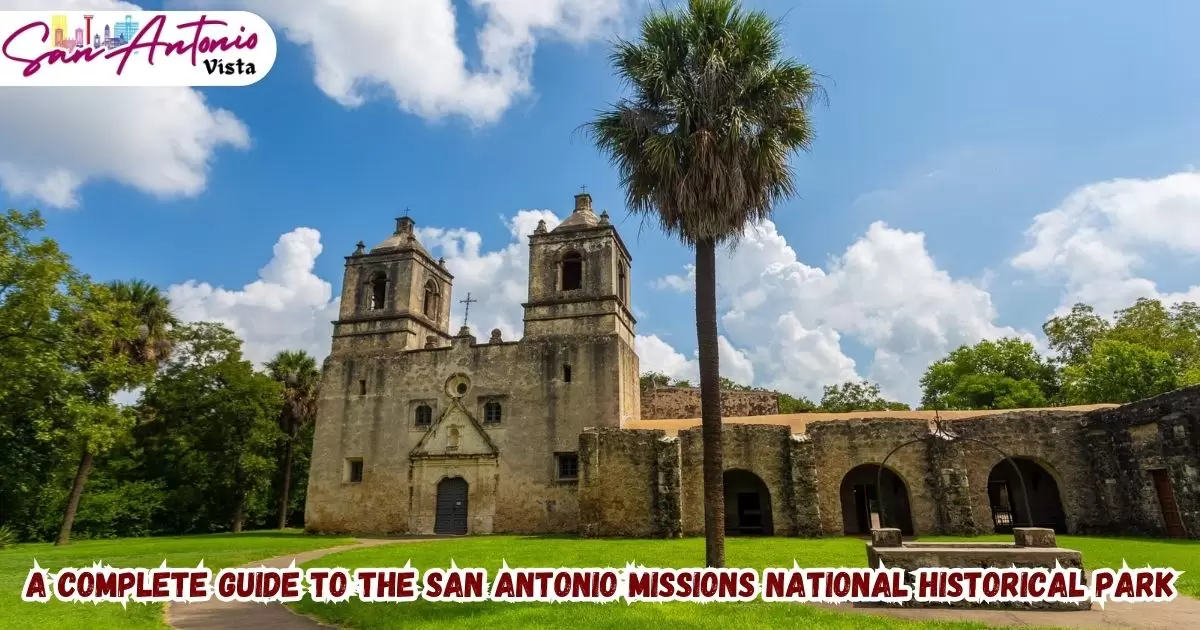The best way to check out the San Antonio Missions is by riding a bike. There’s a 15-mile trail called the “hike & bike” trail that goes along the San Antonio River.
When it comes to intriguing destinations in the United States, travelers are spoiled for choice with an array of sensational options. From the grandeur of national parks to vibrant urban centers brimming with art and culture, the USA boasts a rich list of places worth exploring. San Antonio stands out as one such gem.
Now, before accusations of bias fly, it’s worth noting that the Alamo City recently clinched a spot among the top 23 destinations to visit in the US for 2023, according to Condé Nast Traveler. So, it’s safe to say our enthusiasm is well-founded. What sets San Antonio apart is its offering of a traveler’s trifecta: a unique culture, delectable cuisine, and a plethora of engaging activities.
At the forefront of this list is the San Antonio Missions National Park. Being the lone UNESCO World Heritage site in Texas and a significant part of the state’s history, the missions stand as an absolute must-visit for anyone exploring San Antonio.
History of the San Antonio Missions

While the tale of the Alamo, where legendary figures like Jim Bowie and Davy Crockett met their fate defending the outpost, is globally recognized (thanks, John Wayne), the history of the other missions remains less familiar.
The quartet – Espada, San Juan, San Jose, and Concepcion – shares a common narrative. In the early 1700s, Franciscan Spanish missionaries established each mission, aiming to convert the Coahuiltecan native crews of south Texas to Christianity.
These missions not only spread Catholicism but also imparted vital survival skills like farming, ranching, and masonry.
These missions evolved from mere church settlements to thriving communities where Native Americans coexisted, working and living together. Unfortunately, they also share a tragic common fate. Famine, disease, and conflicts with rival crews led to the downfall of each mission, resulting in secularization and cessation of operations by 1824.
At the core of each mission stood its church, drawing visitors year-round to delve into San Antonio’s 300+ year history. Today, these churches still host regular religious services, some attended by congregants with ancestral ties dating back to the missions’ formation.
How to Visit the Historical Missions
A trip to the San Antonio Missions National Historical Park is often a highlight for visitors exploring San Antonio. Depending on preferences and energy levels, there are various ways to tour the missions.
By Car: All missions are car-accessible, providing dedicated and free parking lots (except for the Alamo downtown, which requires parking in a nearby garage). The missions feature flat and paved walking paths, ensuring easy access for individuals with disabilities. For an efficient route, starting with the southernmost mission (Espada) and progressing north into the city is recommended.
By Bus: San Antonio’s VIA transit company offers convenient bus options for mission tours. The VIVA bus routes, specifically VIVA line #40, connect riders to all four missions south of downtown. Note that VIVA buses stop at cultural destinations, not regular city blocks.
Another choice is VIA bus #42, transporting visitors from downtown to missions San Jose and Concepcion, excluding stops at San Juan or Espada. Details regarding routes and fares are available on the VIA Metropolitan Transit website.
Read Also: Allora: Where Coastal Italian Cuisine Dazzles in San Antonio
Can you bike the San Antonio Missions?
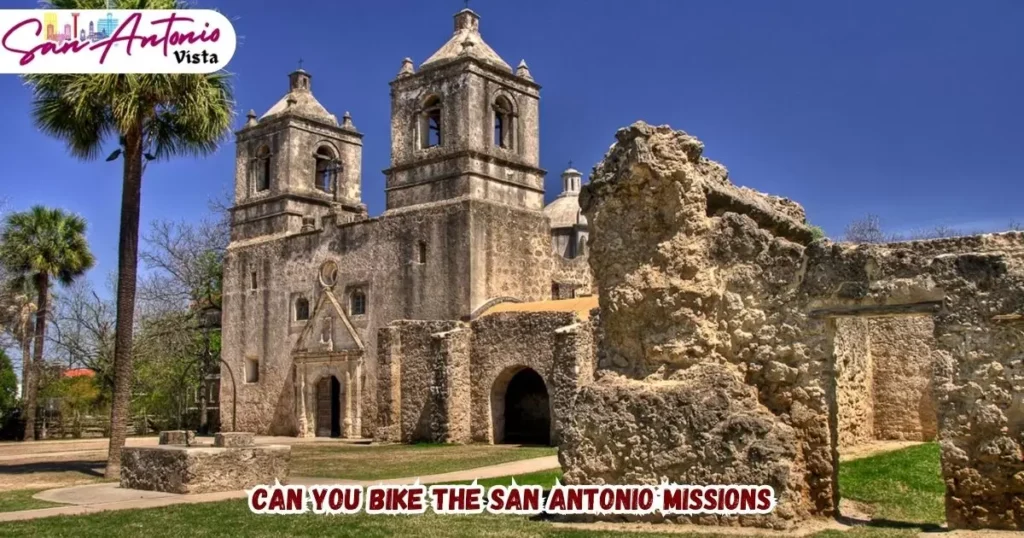
For the most adventurous yet demanding experience, exploring the missions by biking or hiking is an exhilarating option. The missions are situated along the San Antonio River, accessible via the river mission trail running parallel to the River Walk.
This trail spans about 10 miles, meandering from the Alamo southward to Mission Espada. Those opting for this trail not only encounter the missions but also relish scenic vistas of the charming San Antonio River, along with glimpses of local flora and fauna.
Can I rent a bicycle in San Antonio?
For a convenient biking option, explore BCycle San Antonio’s website or app to rent a bike. Bikeshare kiosks are conveniently located at each mission, allowing visitors to grab an unlimited-use day pass for only $15. A printable map highlighting the missions river trail and BCycle bike kiosks can be accessed.
Basic Info About The San Antonio Missions
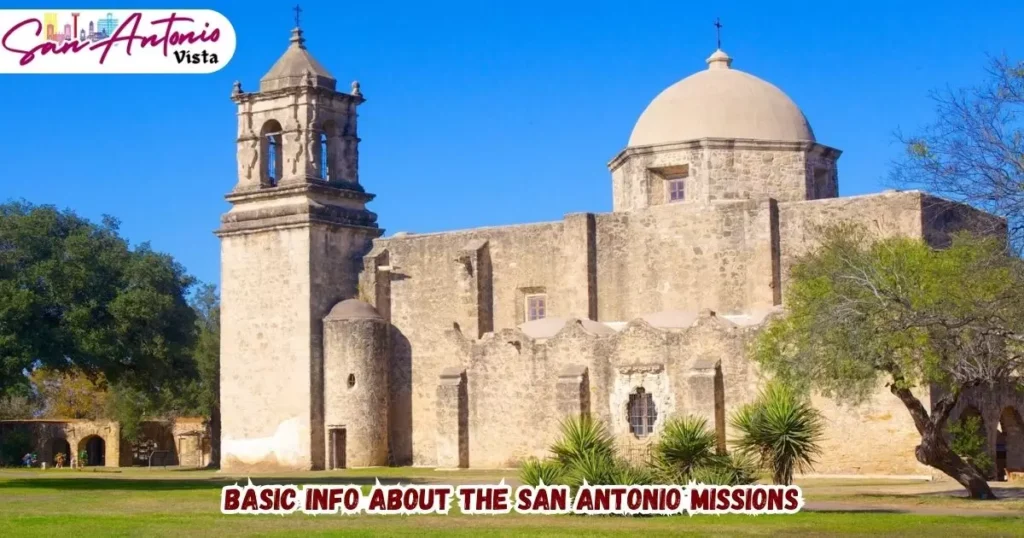
Visiting the San Antonio Missions National Historical Parks provides an enjoyable and educational journey into the rich history of Texas, especially San Antonio. The parks welcome visitors every day, excluding Thanksgiving Day, Christmas Day, and New Year’s Day. Admission is entirely free, allowing exploration of the grounds, structures, churches, and visitor centers. While guided tours are not prevalent (with exceptions noted), you can enjoy complimentary audio tours accessible on your cell phone. Links to each tour will be provided below. For the latest information on operating hours, current conditions, and events, the National Park Service website is your ultimate resource.
1. Mission Espada
Mission Espada, established in 1731, holds the distinction of being the southernmost and smallest among the historic missions. Nestled in a tranquil rural neighborhood, Espada boasts characteristic Spanish features, including an intricately arched church doorway, a belltower, the remarkable Espada aqueduct, dam, and the oldest irrigation system in the United States, known as an acequia.
Strolling through the enclosed mission grounds provides a peaceful ambiance. Don’t miss the museum, showcasing relics from the mission’s life, such as an operational loom, farm tools, and an array of boot spurs.
2. Mission San Juan
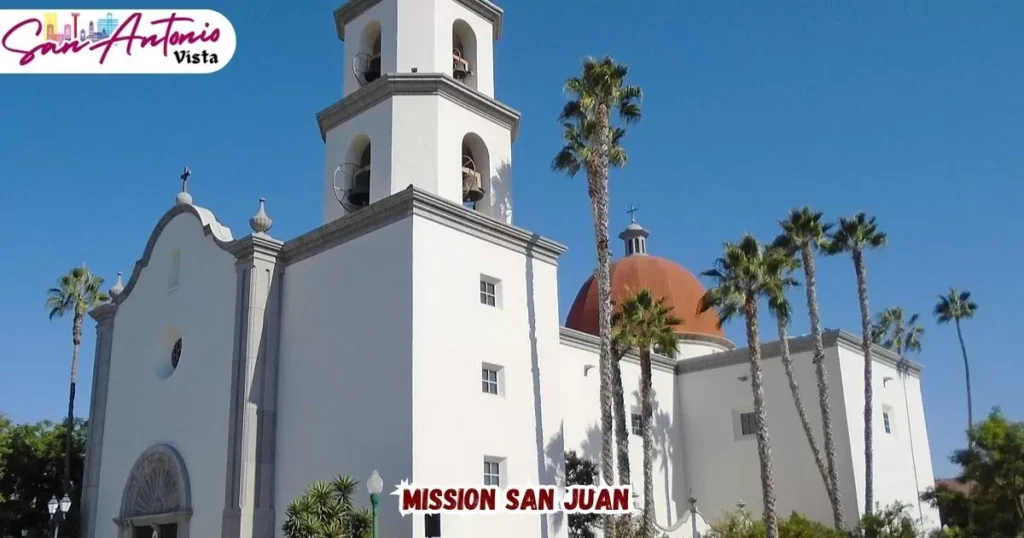
Mission San Juan Capistrano, founded in 1731, is conveniently located just a 5-minute drive from Espada. Its roots trace back to East Texas in 1716 when its mission was to serve the Nazonis Native Americans. Although facing initial setbacks, the mission adapted by relocating all movable assets to the banks of the San Antonio River, where it proudly stands today.
Distinguished by its pristine white stone church built in the 1750s, Mission San Juan stands out among the missions. Notably, its significant contribution lies in the advancement of agriculture and farming. Exploring the mission allows visitors to witness the original farm fields still visible from the 1700s.
Bonus Info: For those venturing to Mission San Juan, the Yanaguana Nature Trail is a must-visit. This paved and ADA-accessible trail spans a short 1/3 mile, guiding guests through lush greenery along a channel of the San Antonio River. Keep an eye out for local wildlife, including owls, turtles, snakes, and herons.
3. Mission San José
Mission San Jose, located just three miles from San Juan, stands as the largest and most impressive among the missions. Established in 1720, it holds the distinction of being the first mission in SA. Recognized for its grandeur, with the mission accommodating 350 native people in 84 two-room apartments at its peak, it earned the title “Queen of the Missions” in 1777.
A highlight of San Jose is its limestone church, an exemplary piece of Spanish baroque architectural style. The intricate stone detailing on the church’s facade sets it apart from other missions, providing a visual treat. Today, San Jose has been meticulously restored to its original layout, offering visitors an extensive exploration of the grounds and insights into the once-thriving community.
Protip 1: Unlike other missions, Mission San Jose (alongside the Alamo) provides live guided tours by a National Park Ranger. These free tours, starting at the visitor center at 10 am and 11 am daily, last approximately 45 minutes. Offering ADA and wheelchair accessibility, they deliver valuable historical context to enhance your visit.
Protip 2: Keep in mind that Mission San Jose, being the largest and second busiest after the Alamo, is a preferred destination for local school field trips. If you prefer a quieter experience, plan your visit on a Saturday or Sunday to avoid the bustling atmosphere created by school groups.
4. Mission Concepción
Mission Concepcion, established in 1731, is situated approximately three miles north of San Jose, nestled in an urban residential neighborhood just south of downtown San Antonio. Concepcion boasts the oldest unrestored stone church in America.
Extensive preservation work on the mission has uncovered a treasure trove of color from the original frescos that were painted in the 1700s, and faint hues can still be seen today throughout the surviving structures.
This mission stands as a testament to the rich historical tapestry of San Antonio, offering visitors a unique opportunity to step back in time and experience the vibrant colors and architectural marvels of the past.
5. The Alamo
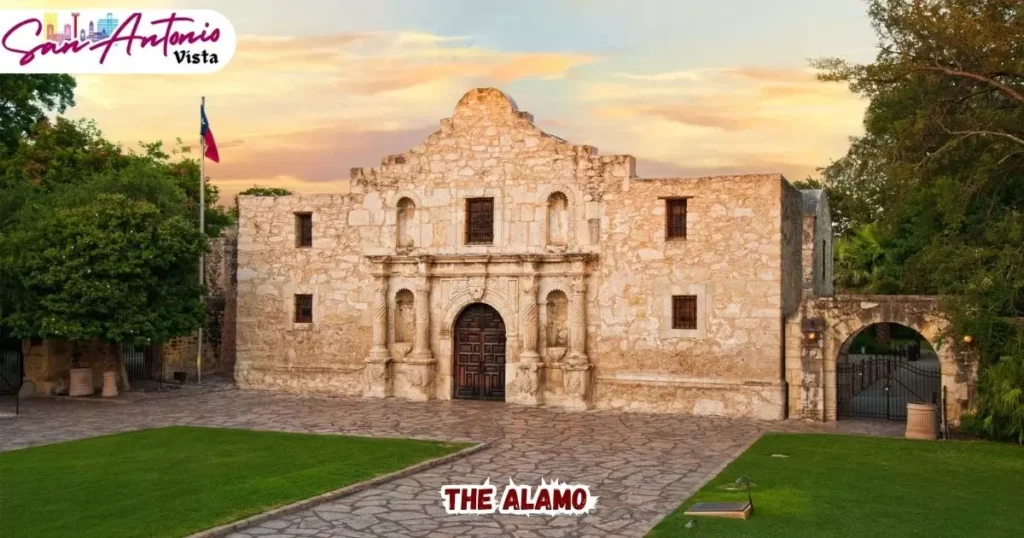
Mission San Antonio de Valero, more commonly known as “the Alamo,” is centrally located in the vibrant downtown area of San Antonio, adjacent to the famous San Antonio River Walk. Established in 1724, the mission operated until 1793, transitioning into a Spanish military outpost.
Today, only the iconic church façade and a few small structures, including the long barrack and Convento courtyard, stand as remnants of the original compound.
Guests visiting the Alamo can explore these structures, delving into the history of the Texas Revolution and the pivotal 13-day siege of the Alamo in 1836 by the renowned Mexican general Santa Anna.
This historic site commemorates the sacrifice of over 180 men who made their final stand, giving their lives for the cause of Texas freedom.
Admission to the Alamo is free but requires timed entry.
FAQs
What is the best way to tour the missions in San Antonio?
The best way to tour the missions in San Antonio is by following the Mission Trail, a scenic route that connects all five missions within the San Antonio Missions National Historical Park. Start at the visitor center and proceed in numerical order (Mission San Antonio de Padua, Mission San Jose, Mission San Juan, Mission Espada, and Mission Concepción). You can explore the missions by car, bike, or even on foot, allowing you to appreciate the historical and cultural significance of each site.
How long does it take to see all the missions in San Antonio?
The time it takes to see all the missions in San Antonio depends on your mode of transportation and the level of detail you want to explore. On average, a comprehensive visit to all five missions may take approximately 3 to 5 hours. If you prefer a more leisurely pace and wish to delve deeper into the history and architecture, consider allocating a full day to fully appreciate each mission.
How many missions are in San Antonio Missions National Historical Park?
San Antonio Missions National Historical Park comprises five missions:
- Mission San Antonio de Padua
- Mission San Jose
- Mission San Juan Capistrano
- Mission Espada
- Mission Concepción
These missions collectively showcase the rich cultural and historical heritage of the region, providing visitors with a glimpse into the colonial past of San Antonio.
Which of the San Antonio missions is best?
Each San Antonio mission has its unique charm and historical significance, making it challenging to determine the “best” one. Mission San Jose is often consider the “Queen of the Missions” due to its impressive architecture and well-preserved features.
Mission Concepción is renown for its beautifully painted church interiors, while Mission San Juan and Mission Espada offer serene landscapes and unique historical elements.
Ultimately, the best mission for you depends on your personal interests and what aspects of history and culture you find most intriguing. Consider visiting all five to gain a comprehensive understanding of the San Antonio missions’ collective heritage.
Conclusion
In conclusion, the Alamo stands as a poignant symbol of Texas history, encapsulating the spirit of resilience and sacrifice during the tumultuous period of the Texas Revolution. The preserved church façade and structures transport visitors to the dramatic events of the 13-day siege in 1836, immortalizing the bravery of over 180 men who valiantly defended their vision of Texas freedom.
While admission to the Alamo is free, the requirement for timed entry ensures an organized and enriching experience for those eager to connect with this vital chapter of American history. Plan your visit to explore the Alamo’s enduring legacy and pay homage to the individuals who played a pivotal role in shaping the destiny of Texas.

I’m Dariel Campbell, the guy who loves making your experience awesome at “San Antonio Vista.” Playing with stories and attractions is my thing. At San Antonio Vista, we’re here to make your visit stand out and shine. Let’s make your time in San Antonio unforgettable—come and join the fun at San Antonio Vista!
